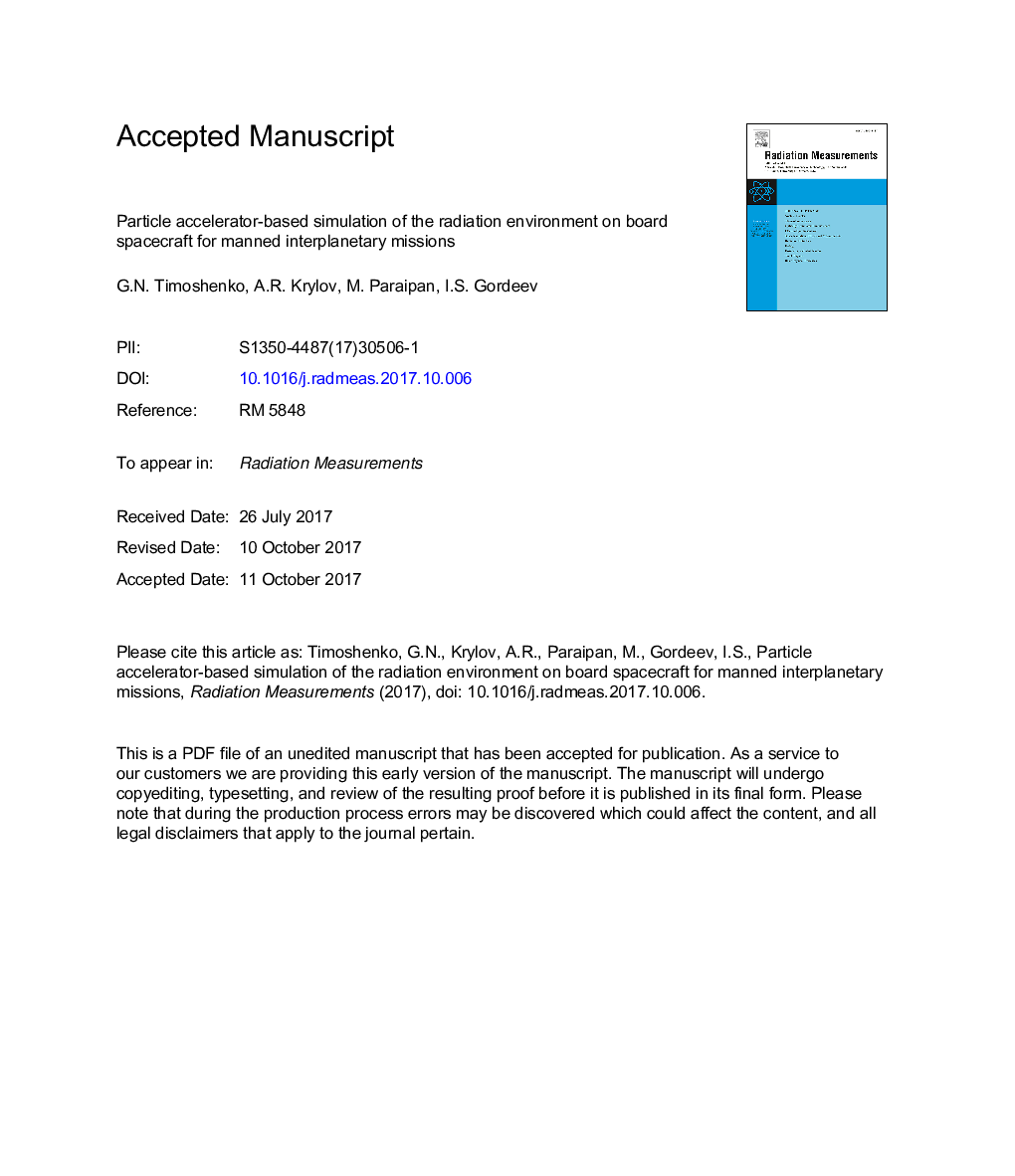| Article ID | Journal | Published Year | Pages | File Type |
|---|---|---|---|---|
| 8249995 | Radiation Measurements | 2017 | 16 Pages |
Abstract
The high-energy accelerator-based simulation of both Galactic Cosmic Rays (GCR) and secondary radiation, to which astronauts will be exposed within a spacecraft in deep space, is a very relevant task for the purposes of space radiobiology. In this work, a method of simulating continuous proton, neutron, and ϱ-meson spectra within the habitable module of a spacecraft is described. The methods are based on a linear combination of the energy spectra of particles emitted at various angles from three different targets bombarded by a high-energy proton beam. The consecutive irradiation of targets makes it possible to create in a certain volume near the beam a summary field that is similar in characteristics to the nucleon field inside the habitable module exposed to GCR averaged over solar activity.
Related Topics
Physical Sciences and Engineering
Physics and Astronomy
Radiation
Authors
G.N. Timoshenko, A.R. Krylov, M. Paraipan, I.S. Gordeev,
